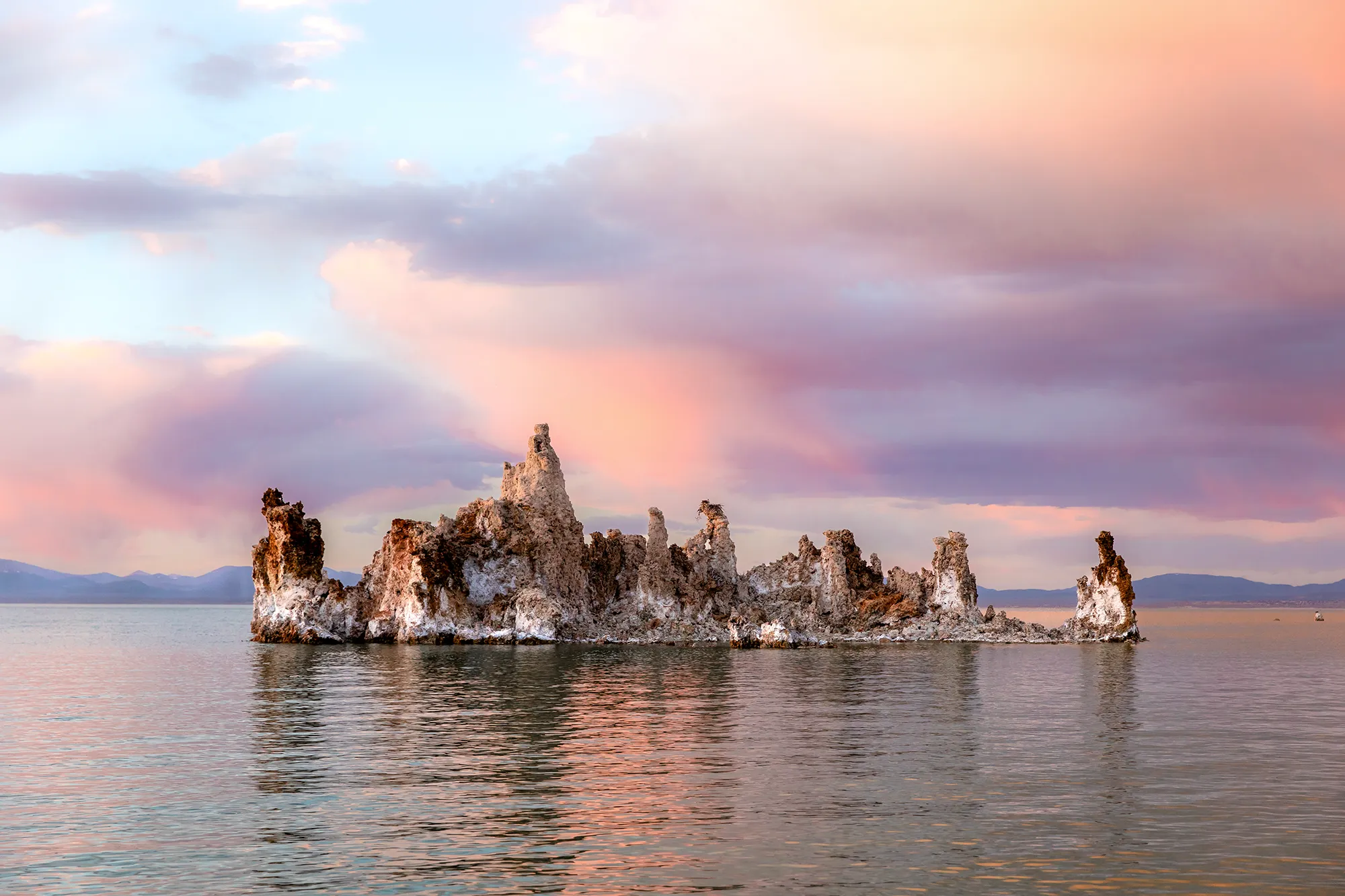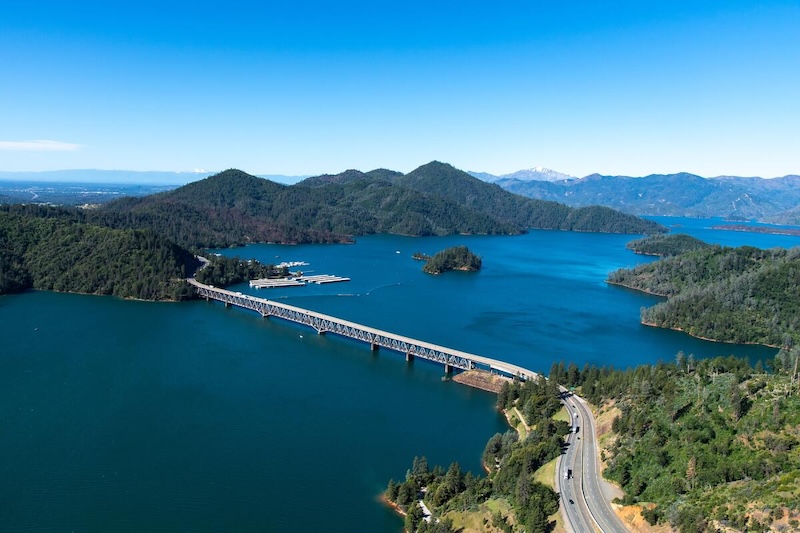
Shasta Lake escapes: kayaking, camping, and caverns beyond the crowds
Picture a place where the water lies still at sunrise, houseboats sway in roomy coves, and green inlets reach out below the snowy edge of Mount Shasta. Shasta Lake is that rare California escape—wild enough to thrill, quiet enough to recharge. Its arms stretch for miles, inviting you off the beaten path. We’re sharing our all-season route to Shasta Lake, why it’s a standout among northern California lakes, and how to find its rawest moments—whether you’re gliding by kayak, camping on the shore, or exploring deep beneath the surface.
Key takeaways from our Shasta Lake guide
Shasta Lake offers 360 miles of shoreline and 30,000 surface acres of water where you can find both adventure and solitude, whether houseboating, kayaking through quiet coves, or swimming in crystal blue waters.
The four main arms of the lake (Sacramento, McCloud, Pitt, and Squaw) each provide unique experiences with opportunities to spot wildlife like bald eagles and osprey against the backdrop of Mount Shasta.
Beyond water activities, the Shasta Lake area rewards visitors with shoreline camping under starlit skies, hiking trails through oak and pine forests, and underground wonders at Lake Shasta Caverns.
Visit during the off-season (late fall through early spring) for a more peaceful experience with misty mornings, empty campgrounds, and the true wild character of this Northern California treasure.
Finding your way to Shasta Lake
Shasta Lake anchors itself in far northern California, about 10 miles above Redding and right off Interstate 5. Carved by the mighty Shasta Dam, this reservoir is a lifeline for the Central Valley and a landmark in California’s water story. Heading in feels like the adventure has already started—winding through forests, taking in those first big glimpses of open water.
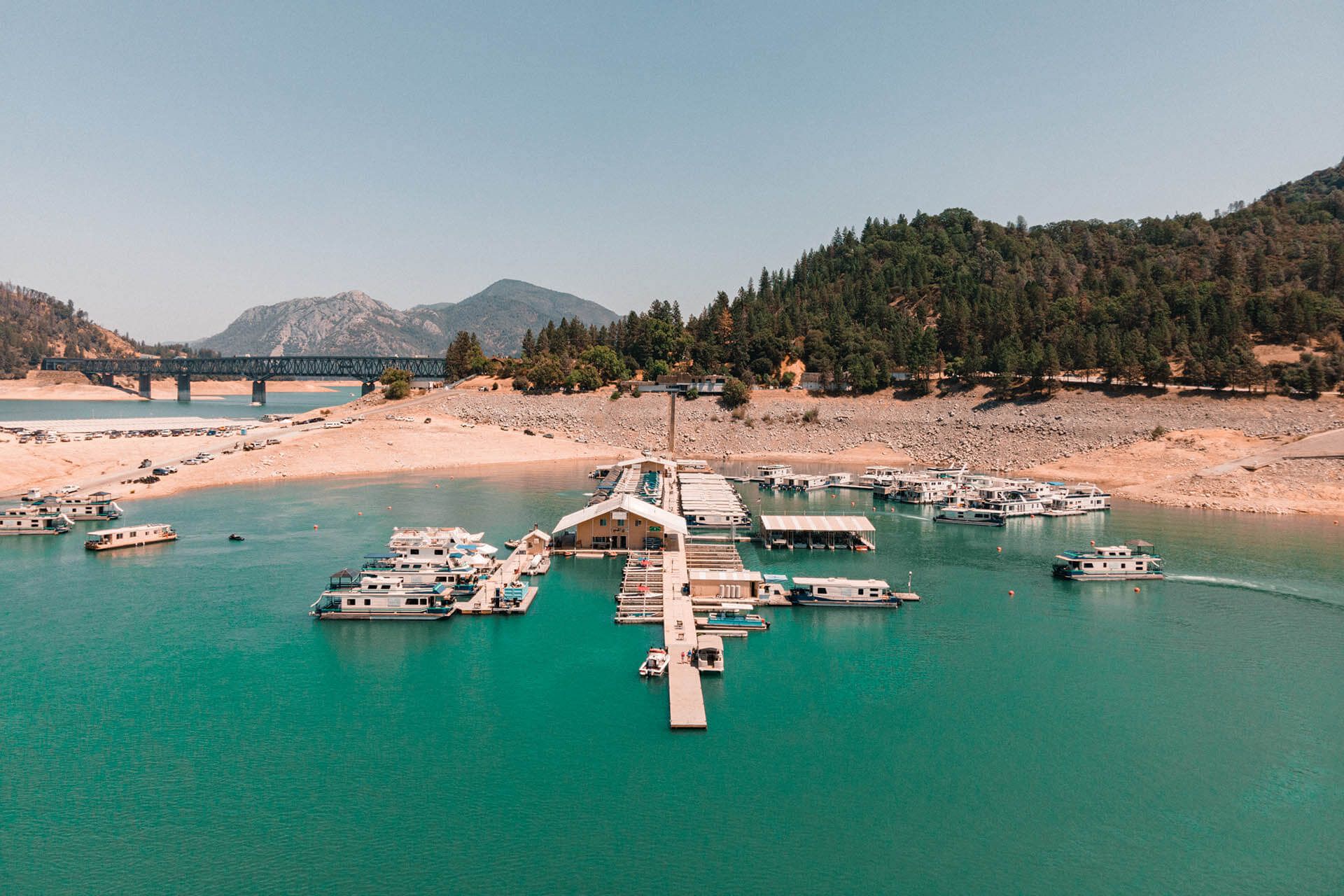
Entry to the Shasta lake area is scattered with options, each with its own flavor: Bridge Bay Marina’s lively docks, the laid-back pace at Digger Bay Marina, or Lakehead’s small-town welcome. Coming from the Bay Area? The drive north takes about three and a half hours and rewards you with changing landscapes all the way up. If you’re road-tripping from Oregon, you’ll meet the Sacramento River head-on as it flows south. Whether you want the energy of the marinas or the hush of hidden coves, the Shasta lakes have an entry point to suit every kind of wanderer.
What makes Shasta Lake worth the journey
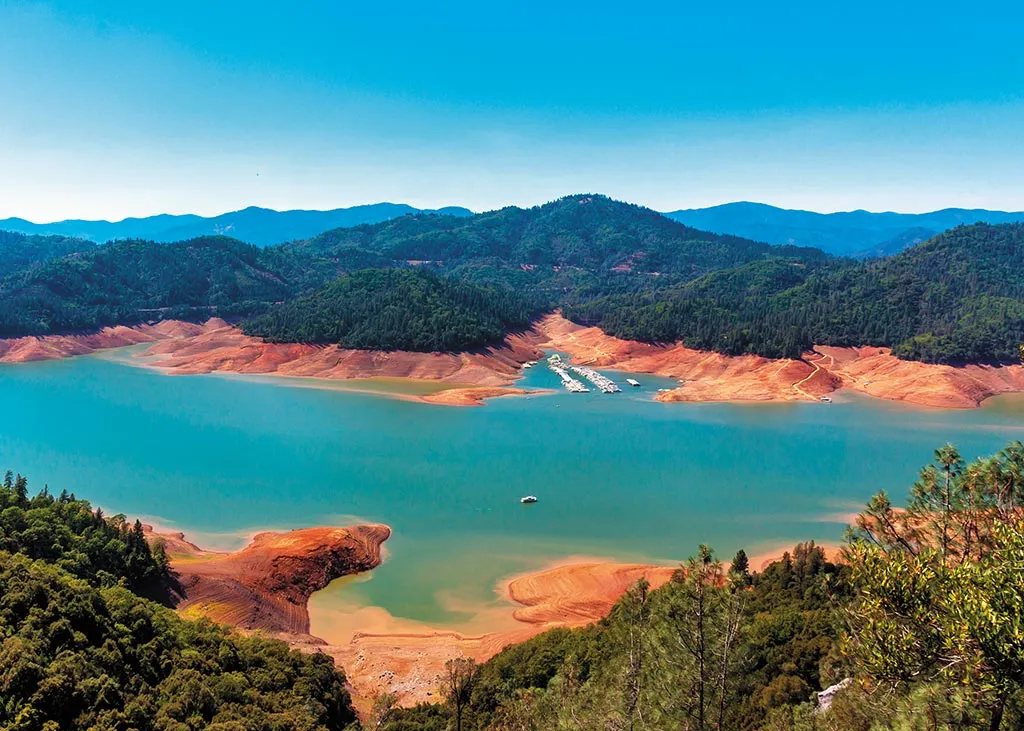
Shasta Lake is California’s largest reservoir and an endless invitation for adventure seekers, solitude chasers, and water lovers alike. With over 360 miles of winding shoreline, there’s space here for houseboat explorers, fishing pros, casual paddlers, or anyone longing for a place that still feels wild and wide open.
California's largest reservoir awaits
The scale here is honestly hard to put into words. Shasta Lake stretches out across 30,000 surface acres when full, a vast expanse that came to life in the 1940s with the construction of Shasta Dam—shaping the Sacramento River valley forever. This lake holds trillions of gallons, supporting everything from local farms to wildlife, and giving adventurers year-round ways to soak up the outdoors. Maybe you come for a swim in crystal blue waters, a shot at reeling in bass, or a quiet morning kayaking under an endless sky.
Each of the main lake arms—Sacramento, McCloud, Pitt, and Squaw—offers something different. Some are wide open and sun-drenched, others curve deep into forests with quiet, shaded coves. There’s always a patch you can claim as your own slice of wild California.
Where mountains meet endless water
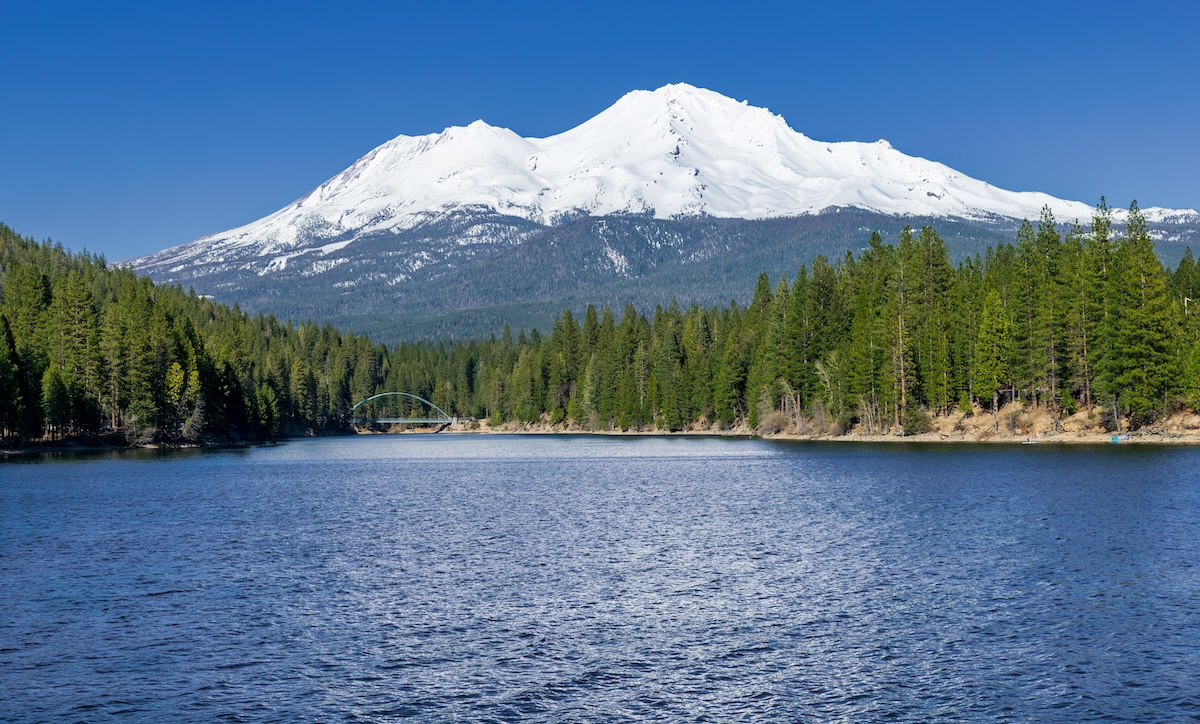
What truly makes the Shasta Lake area special is the way water and wilderness run right into each other. Steep ridges and stands of evergreens ring the lake, while Mount Shasta’s snowy peak hovers on the horizon. It’s both untamed and inviting—a landscape shaped by water, time, and the slow work of mountains.
Locals call this region the “Cascade Wonderland” for good reason. Here, you’re surrounded by national recreation lands, winding trails, and groves of old-growth manzanita and oak. Look out for bald eagles and osprey patrolling the sky, or herons wading at the edge. When evening comes, the mountains light up with the last rays of the sun while the lake catches those colors, reflecting an ever-changing sky.
If you crave room to breathe, Shasta delivers. Even during peak season, it’s easy to find a sheltered arm or peaceful cove and settle in, far from the buzz, where the wild is yours to enjoy at your own pace.
The reasons it’s worth the drive are simple:
**A lake big enough for any trip—**whether you want fast-paced fun or a quiet reset
-
Mountain vistas and starlit nights far from glowing city lights
-
A real chance to reconnect with California’s wild water, the heart of the Central Valley and the living spirit of the north
Water adventures that call to you
Shasta Lake is where water lovers come alive. Whether you’re drawn by the thrill of wake sports or craving the quiet of a paddle at sunset, the lake’s sprawling arms offer both heart-pounding action and peaceful reflection. Here, adventure and calm mingle on glassy blue water.
Houseboats and kayaking your way
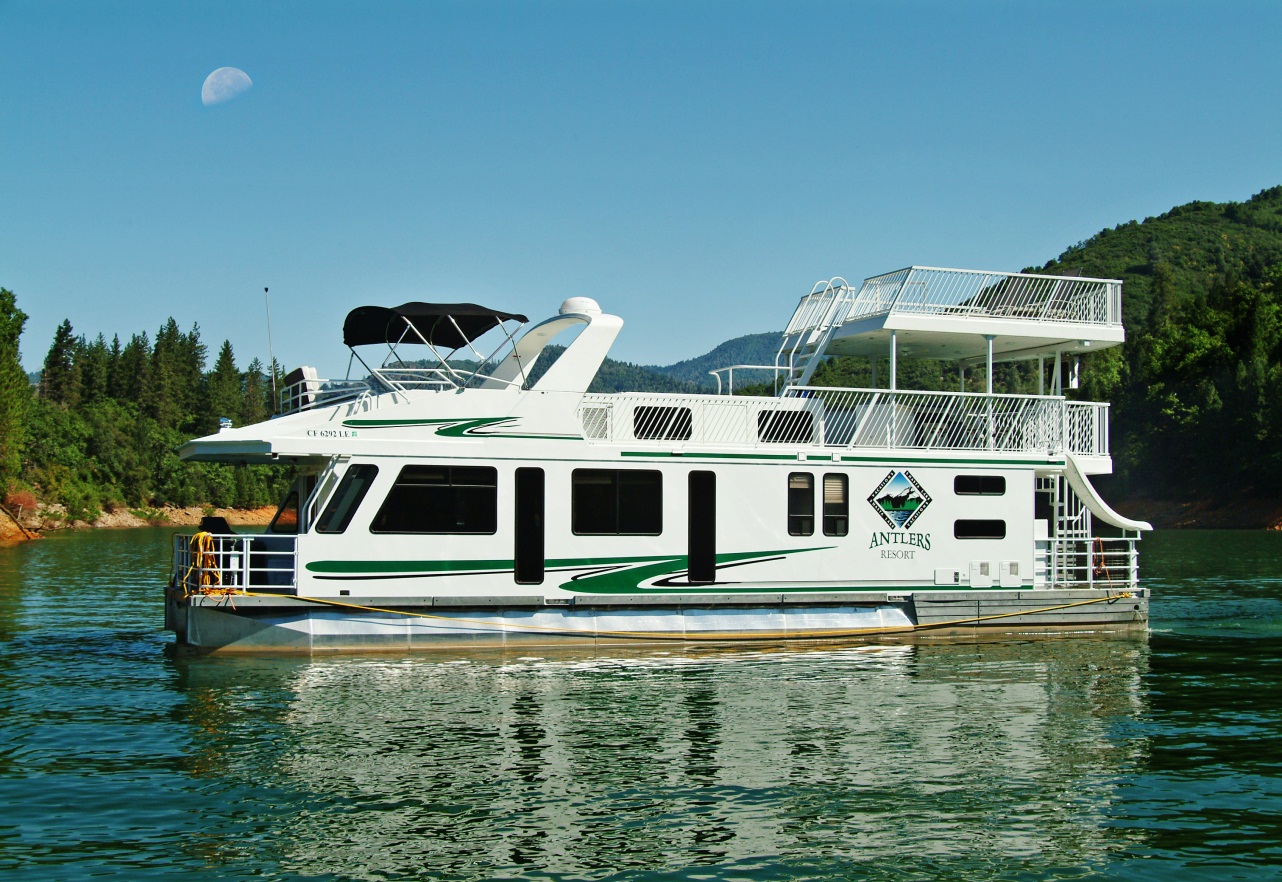
Renting a houseboat on Shasta Lake is pure slow-travel bliss. It’s not just a vacation, but an invitation to take your days at an easy drift. With hundreds of tucked-away coves and shady forest inlets, you can anchor in solitude, wake up to mirrored mornings, and measure time by the sun, not the clock. Local marinas like Bridge Bay and Digger Bay make it easy, whether you want a simple floating base or a spacious, decked-out retreat on the water.
If you’d rather slip quietly into hidden corners, kayaking lets you get up close to Shasta’s wild side. Glide beneath mossy oaks and along steep-walled canyons, slipping through narrow channels where only birds and maybe an otter will notice your passing. Early mornings are magic—the mist hangs low, the surface is still, and all you hear are paddle dips and distant calls from the shore. Kayaking and houseboating here mean real freedom:
Explore secret arms and quiet inlets only locals seem to know
Spot bald eagles, osprey, and deer along undisturbed shorelines
Link your days on the water with camping, fishing, or nights under the stars—either anchored on the lake or nestled in the trees
Swimming and wake sports in open water
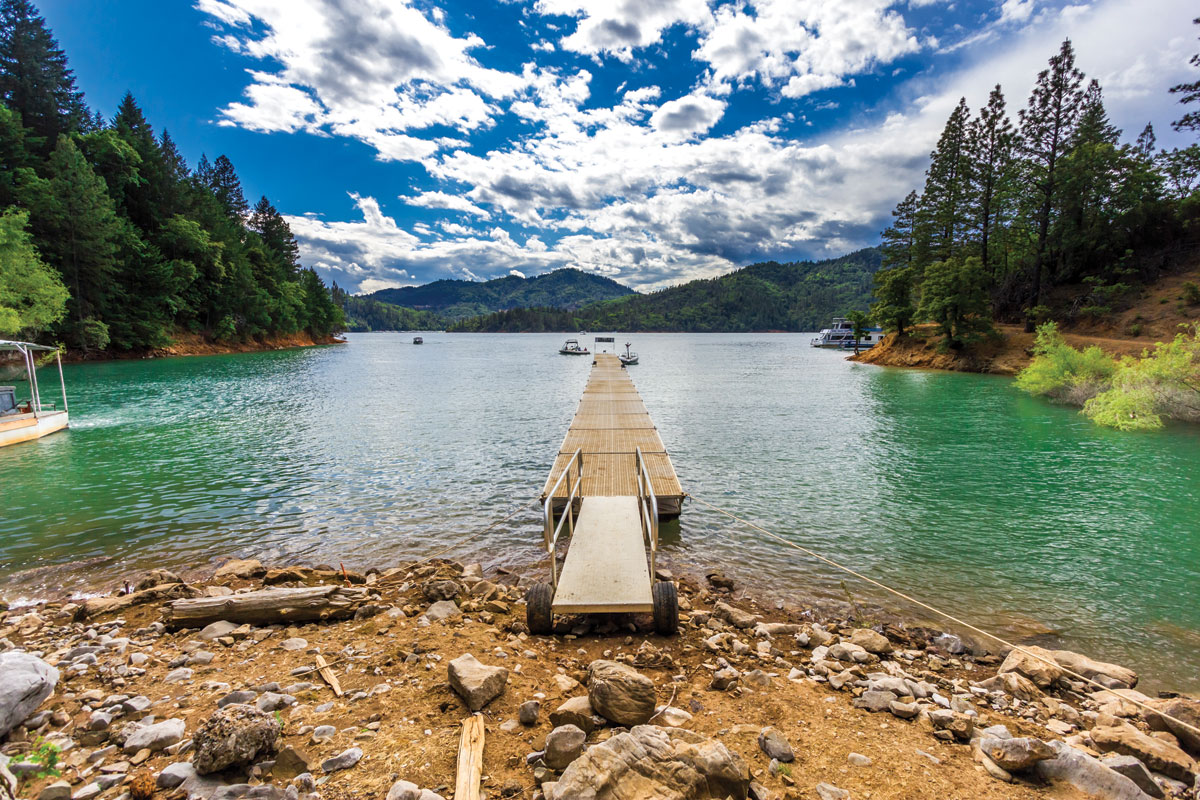
Shasta’s wide-open basins were made for those who like their summer with a splash of adrenaline. By late spring, the water warms up and stays inviting well into fall, so there’s plenty of time for swimming, tubing, or launching into wake sports. Head to the broad open stretches near Antlers or Jones Valley, where there’s space for water skiers, wakeboarders, and jet skis to spread out, or search for your own hidden swimming spot when you want the world to yourself.
Safety always comes first—keep an eye on boat traffic, check the forecast, and wear proper gear. Local shops rent what you need for wake sports and can point you toward smoother water or quieter corners perfect for beginners.
Swimming here, you’ll feel like you’ve slipped into your own private pocket of summer—clear, deep water framed by rugged shoreline and Mount Shasta towering in the distance. For the quietest swim, slip into a secluded cove at first light or just before sunset, when the lake feels endless and untouched.
Shasta Lake’s water adventures are about finding your own rhythm—between pulse-racing excitement and deep, restorative quiet. The memory that lingers is the feeling of water all around you, mountains on the horizon, and the kind of solitude that stays with you long after you leave.
Land-based discoveries
Shasta Lake offers so much more than shimmering water. Wandering the shore on foot or camping out under a bowl of stars brings a deeper connection to its rugged beauty, hushed stillness, and hidden places—far from any crowds.
Camping and quiet lakeshore trails
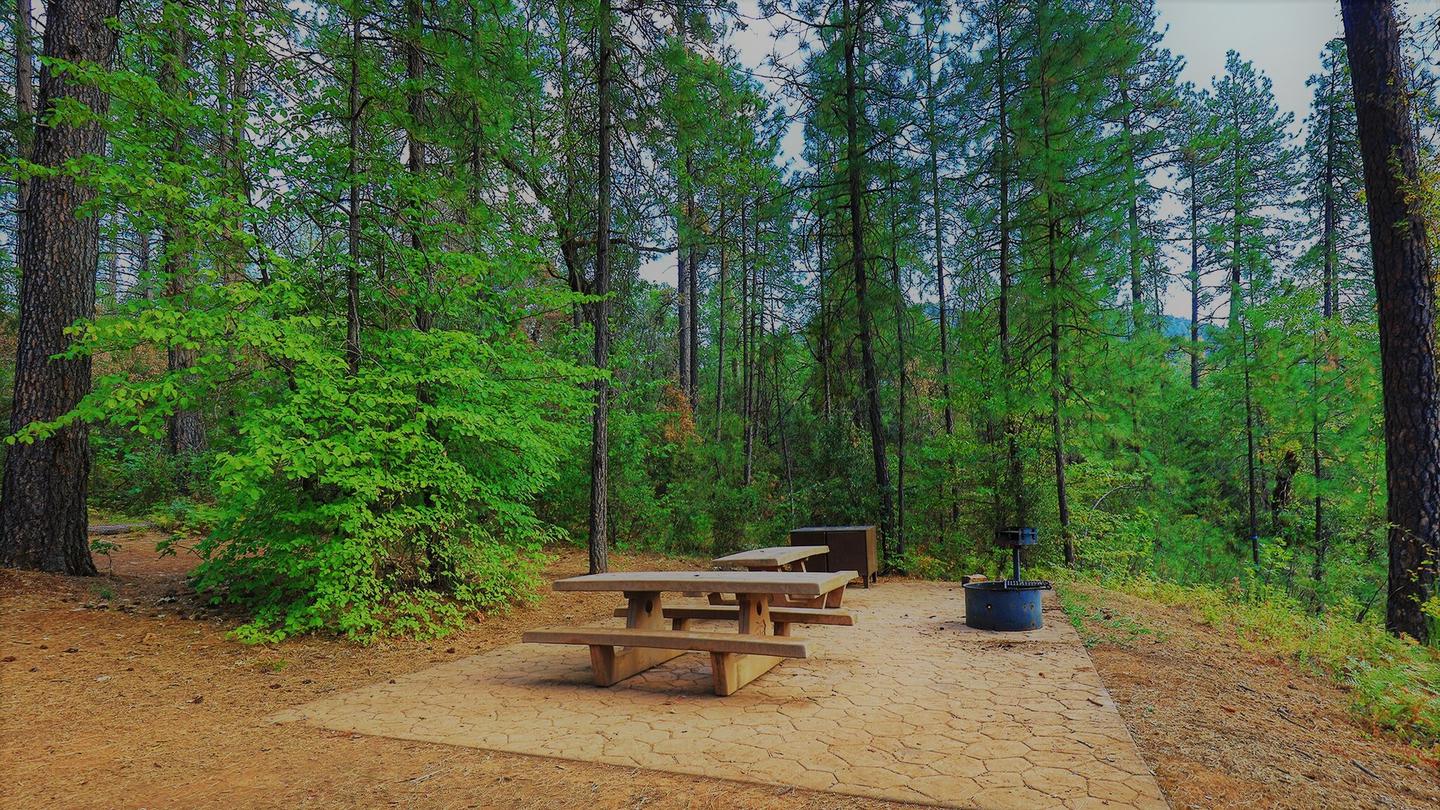
Camping around Shasta Lake invites you to unplug and let nature set the pace. Whether you pitch a tent at a classic lakeside spot like Hirz Bay or Antlers Campground, or follow your curiosity to a simpler site along the shoreline, it's easy to find spaces where manzanita scents drift on the breeze and your neighbors are deer or the call of an osprey passing over the cove.
Many campgrounds sit just steps from the water, making it simple to slip in for a swim, launch a kayak, or watch the light shift across the reservoir. As the sun sets, the air cools in just the right way for campfire stories and stargazing under a brilliant Milky Way, thanks to skies mostly free of city glare. For those drawn to even quieter corners, dispersed camping in the nearby national forest lets you truly feel part of the wild—but remember to tread lightly, pack out what you bring, and check on fire safety rules.
If you’d rather stay on the move, Shasta Lake’s trails thread through oak forests, fragrant pine, and along bluffs overlooking water and sky. Walkways near the Sacramento Arm or Antlers Peninsula reward you with panoramic views and glimpses of early-morning fishing boats gliding through the calm. Slow down along these shaded paths, letting the chorus of birds and the sheer quiet help you soak up the wild, unhurried feel of this part of the Cascade Wonderland.
Shasta Caverns and underground wonders
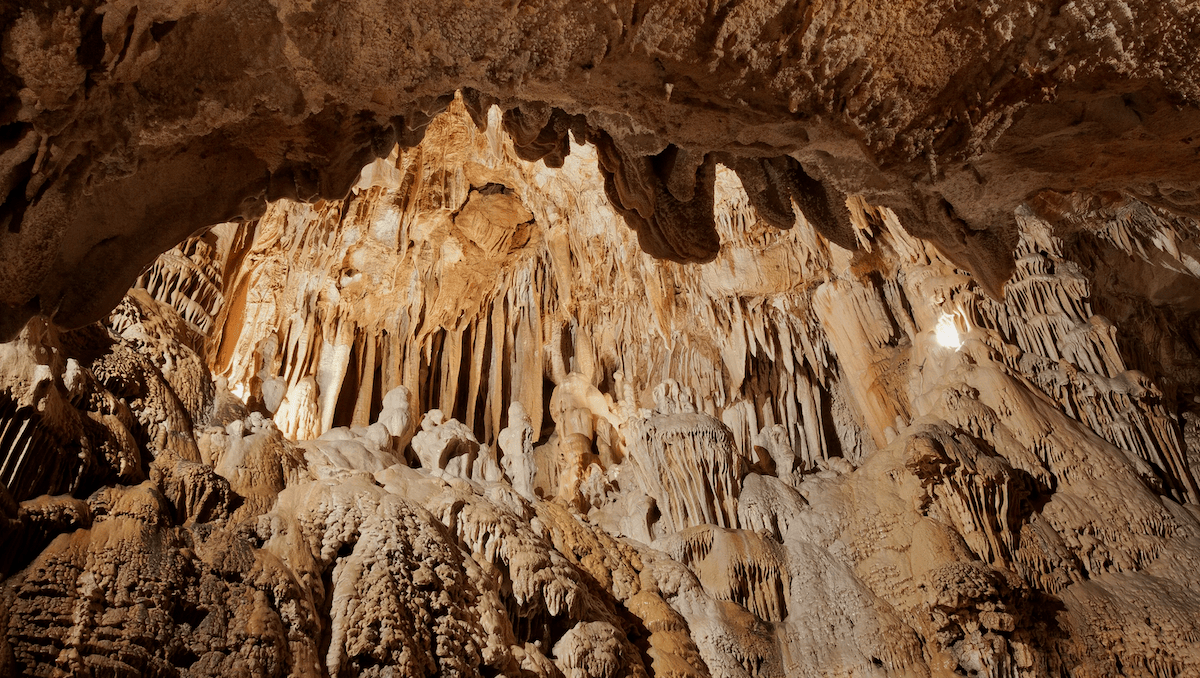
The magic of Shasta Lake isn’t limited to what’s above the surface. Just below the foothills, you’ll find the Lake Shasta Caverns—an underground world reached only by a scenic boat ride across the reservoir. Guided tours bring you deep into passageways crowded with stalactites, stalagmites, and glittering rock formations—a mysterious, cool escape from the sun above.
The trip starts with a memorable boat ride across the McCloud Arm, then a quick ride up the hillside to the caverns’ mouth. Inside, your guide will share stories of how water sculpted these underground spaces over millions of years and point out the fragile, secret life that thrives in the cool darkness. The steady underground temperature makes it a refreshing break on hot afternoons.
Whether you’re curious about geology, adventuring with family, or just looking to see a different side of the Shasta Lake area, these caverns are a must. Exploring this secret world beneath the hills is a reminder that Shasta’s wonder runs deep—revealing beauty above and below ground, if you’re willing to seek it out.
Local knowledge for your visit
If you want to get the most out of Shasta Lake, tune in to the small details locals notice—how the light shifts on the water, which coves hold morning stillness, and how the forests edge closer (or farther) with every season. A bit of local wisdom goes a long way, helping you experience the lake with respect and a sense of belonging.
Dam stories and area history
Every story at Shasta Lake circles back to the towering presence of Shasta Dam. Finished in the mid-1900s, this massive concrete wall changed everything—from the course of the Sacramento River to the creation of the largest reservoir in California. Its impact runs deep, touching water supplies, power for nearby towns, and the shape of the Central Valley itself.
But the area’s roots reach further. Before the lake filled, indigenous communities lived and traveled these lands. Old migration paths and trade routes still echo under the surface, and on a dry year, you might spot gold-mining relics or hints of long-lost rail lines along the shore. Locals still share tales of fishing from forgotten creeks, catching sight of sunken bridges, or tracing the outlines of a landscape rewritten by water and time.
Off-season visits and mindful exploring
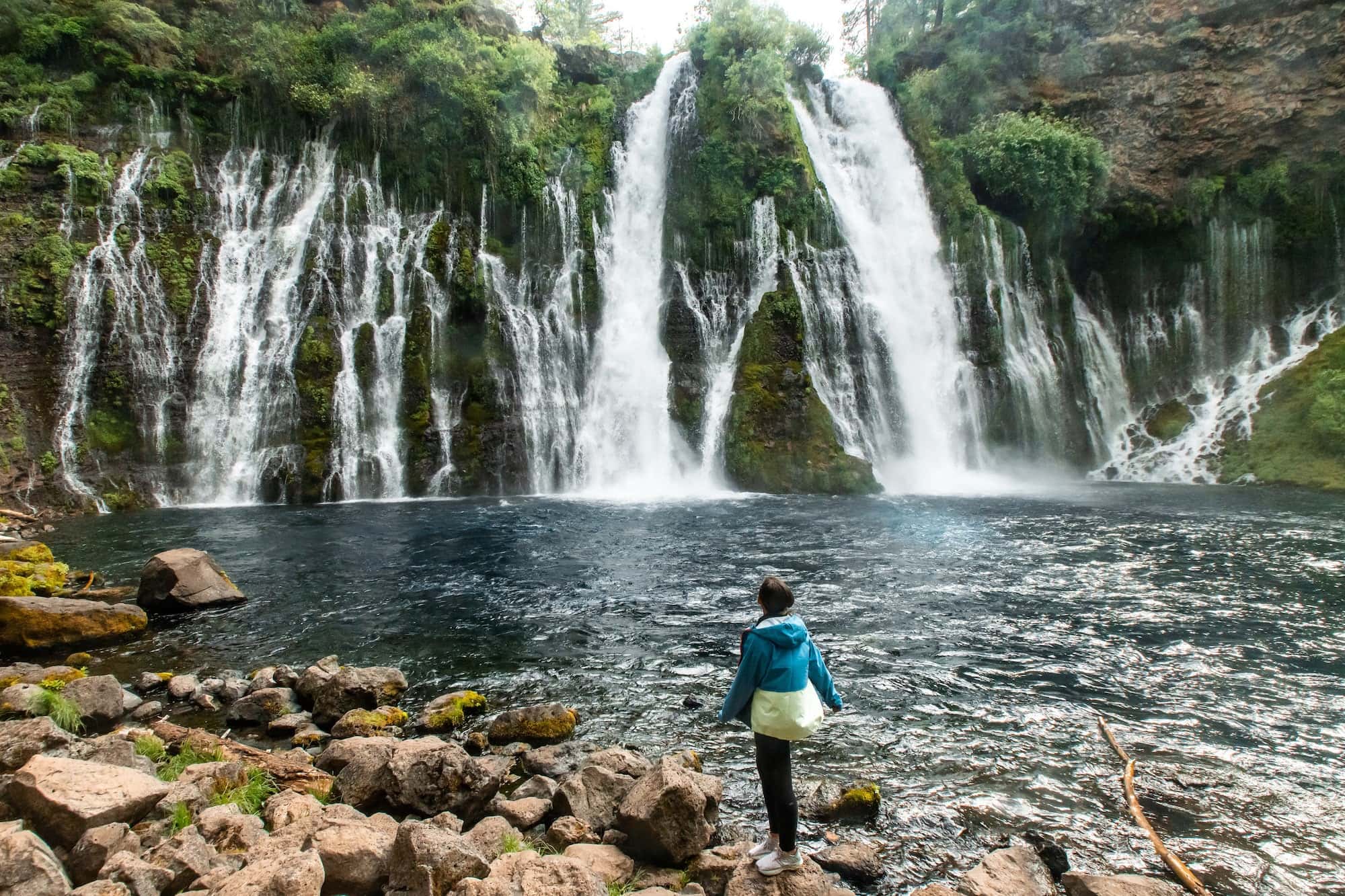
Summer days heat up with boats and families, but ask anyone who lives nearby and they’ll tell you: Shasta Lake’s quieter months—late fall through early spring—are when the place slows down and truly reveals itself. Mist hovers on the arms, bald eagles sweep overhead, and the Cascade Wonderland forests stand tall and quiet against the blue.
If you visit outside peak season, pack smart—nights get cold, trails can be muddy, and water lines shift. Check weather updates, keep an eye on lake levels, and take it slow. You’ll find empty campgrounds, hushed hiking paths, and a peace that’s hard to come by when the marinas fill.
To explore responsibly:
-
Respect the wild—leave no trace and let local creatures go about their business.
Keep to established trails and leave shoreline plants undisturbed. Always carry your trash back out.
Stay up to date on fire restrictions and water safety, especially as drought patterns impact the Shasta reservoir and its tributaries.
Visiting Shasta Lake connects you to a landscape that’s always in motion, shaped by water, weather, and the care of those who know it well. When you explore with intention, you become part of that story too.
Why Shasta Lake stays with you
When you’ve hauled your gear back to the car and the last paddle stroke settles, Shasta Lake has a way of sticking with you. Maybe it’s the sheer size—the vast water, Mount Shasta’s snowcapped outline watching over you, or the winding arms that seem to welcome anyone craving a little solitude. But it’s also the sense that you’re sharing space with something shaped by river, dam, and time, tucked into a stretch of the Central Valley that rewards patience and slows you down.
The best moments sneak up quietly—a sunrise paddle when the lake’s still wearing its morning calm, stars mirrored on clear water, or a soft breeze moving through the manzanita. Shasta isn’t content to be just another stop. It invites you to settle in, whether you’re drifting on a houseboat, exploring on foot, or letting the day meander along the reservoir’s edge. You carry a bit of Shasta’s wildness home, a reminder that some places ask you to move slower, travel with care, and look for discovery just past the busy spots.
Frequently Asked Questions
Is Shasta Lake safe to swim in?
Shasta Lake is generally considered safe for swimming in designated spots. The water is clear, well-maintained, and tested regularly for quality. Always keep an eye out for boats and be aware that water depth can shift quickly, especially near the dam or open channels. Swim with a buddy, stick to marked areas, and look for posted updates about seasonal or environmental changes before you head in.
What is Shasta Lake known for?
Shasta Lake stands out as California’s largest reservoir, a favorite for houseboating, fishing, and wide-open water adventures. Visitors love the 360 miles of shoreline, the dramatic backdrop of Mount Shasta, and the winding coves that are perfect for paddling or dropping a line. The impressive Shasta Dam is also a big part of local history, shaping both the region’s landscape and its hydropower story. In short, it’s a place for both all-out adventure and quiet moments in nature.
How deep is the deepest part of Shasta Lake?
At its deepest, Shasta Lake drops to about 517 feet near the dam when fully filled. Depths rise and fall with the seasons, reflecting rainfall, snowmelt, and water management needs across Northern California. These deep waters help make Shasta Lake crucial for both storing water and generating power for the state.
Will Lake Shasta be full in 2025?
There’s no way to guarantee if Lake Shasta will be at full capacity in 2025. Water levels shift every year depending on how much rain and snow the region gets, as well as how the state manages its water resources. For up-to-date conditions or forecasts, check with the U.S. Bureau of Reclamation or local environmental updates before you set out.

